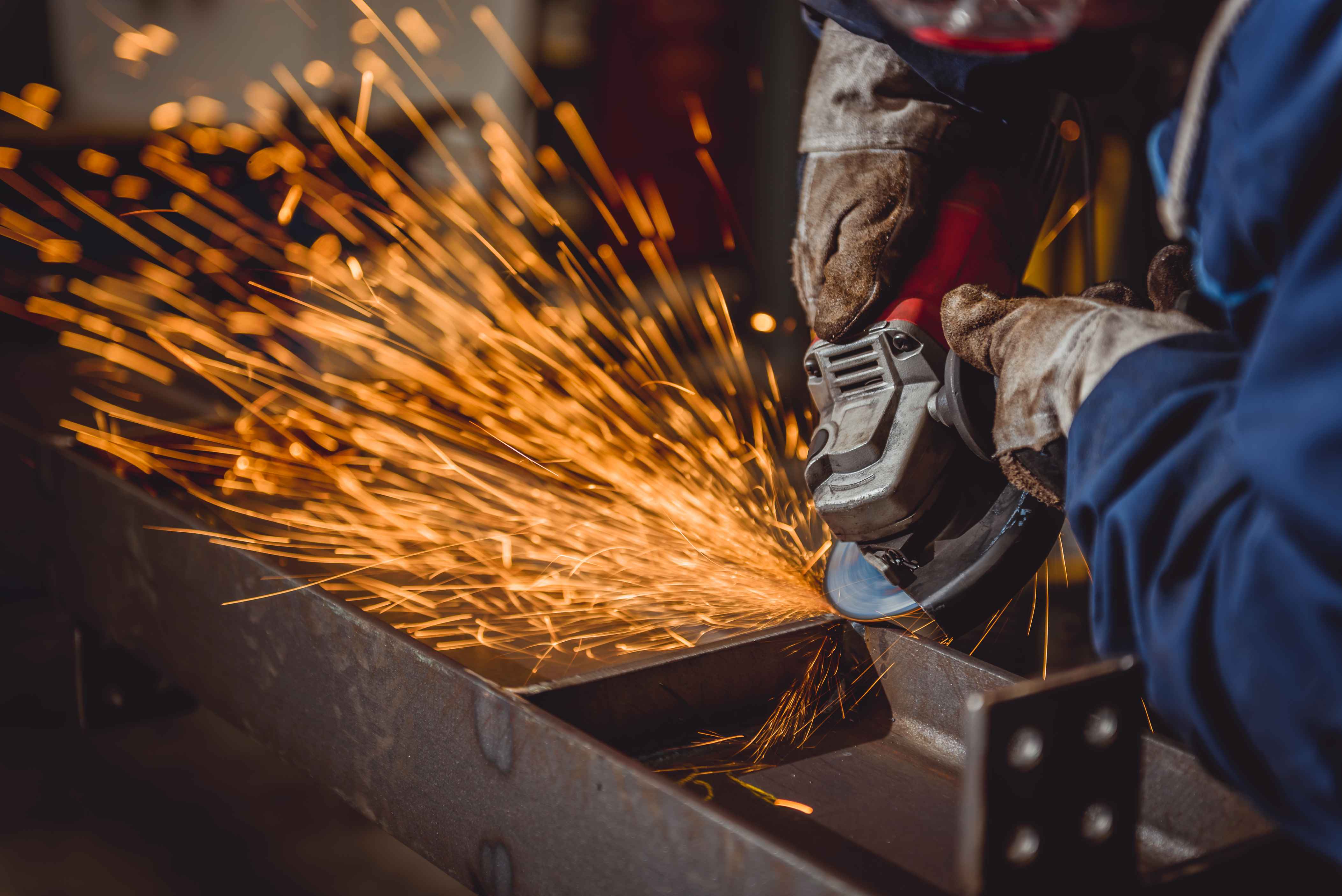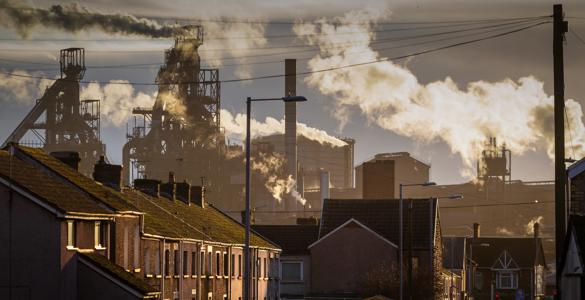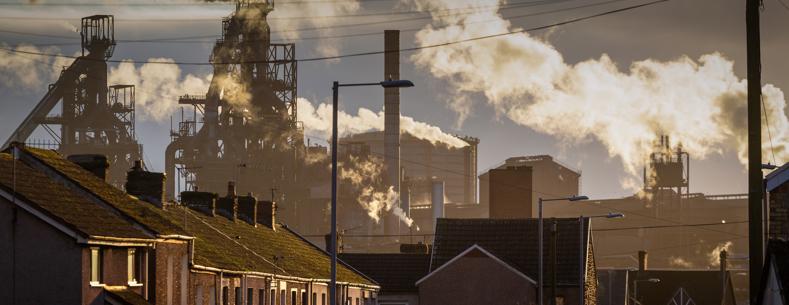Steelmaking is critical to Wales. Not only is it central to our industrial heritage, it’s also a big part of our economy.
Yet it’s an industry facing many challenges – not least the need to decarbonise while also remaining competitive globally, and navigating shocks like spiking energy costs.
Tata says it needs £1.5 billion of UK Government funding to support decarbonisation of its UK operations, but this level of financial support hasn’t been forthcoming yet.
It says a decision is needed by July, or it will consider closing UK sites.
As the Senedd’s Climate Change Environment and Infrastructure Committee takes evidence on Tata’s future, this article looks at the issues involved.
Why does steel matter?
The Welsh iron and steel industry directly employed 7,330 people in 2021 – 45% of the UK steel workforce. Wales produces over 60% of total UK crude steel output. Iron and steel are Wales’ fourth biggest export – worth about £1.4bn.
Tata employs around 8,000 people at its UK sites, about threequarters of whom are in Wales including around 3,500 at Port Talbot..
Tata says that in 2020-21 its operations contributed 3% of Welsh economic output, and paid salaries 36% higher than the UK average.
But Prof Max Munday and Prof Karen Turner highlight that Welsh steel faces multiple challenges – not just decarbonisation. These include high energy costs, business rates and regulation. They say it’s also vulnerable to currency fluctuations and global over-capacity. As UK Steel highlights, challenges the sector faces with energy prices have been “hugely exacerbated” over recent months.

While supporting the steel industry comes with a cost, the strategic importance of producing ‘green’ steel domestically is widely accepted including by environmental organisations. Steel underpins essential sectors like energy, aerospace and construction, as well as being a key employer in areas where these skilled jobs would be hard to replace.
How has the Welsh Government helped over recent years?
The Welsh Government has provided a range of support to Tata and the wider steel industry. It contributed to investment in an onsite power plant reducing carbon emissions, and provided support on skills in both 2016 and in 2018.
It’s also invested in research and development with EU structural fund support, and has worked on steel procurement to support sourcing in infrastructure projects.
However, the Welsh Government inevitably focuses on devolved areas. The Minister for Economy has said the UK Government holds key powers in relation to industrial decarbonisation.
The UK Government has made funding available to energy intensive industries, including steel, through its Industrial Energy Transformation Fund. In 2019 it consulted on a £250m Clean Steel Fund though this has not yet been launched.
How does policy address steel sector decarbonisation?
Both governments are committed to net zero by 2050. The UK Climate Change Committee (CCC) has also recommended steel-making should reach near zero emissions by 2035.
The UK Government’s Net Zero Strategy says it will “consider the implications” of the CCC recommendation. Key commitments are also included in its Industrial Decarbonisation Strategy and Hydrogen Strategy.
The Welsh Government’s Net Zero Plan includes policies on industry and business, including steel, focusing on resource efficiency, fuel switching and Carbon Capture Utilisation and Storage (CCUS). It again stresses the UK Government’s role in addressing Welsh industrial emissions.
The Welsh Government anticipates that, without efforts to ensure a ‘just transition’, net zero presents a threat to Neath Port Talbot as it has the highest percentage of workers employed in heavy industry, and the second highest rate of economic inactivity, in all of Wales.
It says a just transition doesn’t mean jobs in industrial sectors in Wales will inevitably be lost, but means “we need to work with and transition these industries so they produce products in lower carbon ways” requiring new skills and knowledge.
Is ‘green steel’ an option?
Yes but it won’t be easy (or cheap).
Iron and steelmaking are major greenhouse gas emitters - generating 14% of UK industrial greenhouse gas emissions, and 2% of total UK emissions, in 2019. In Wales, the sector comprised 37% of total industry and business sector emissions that year.
However, steel is also an essential commodity – and key for critical net zero infrastructure. In 2021, the UK imported 54% of its steel needs.
Blast Furnace-Basic Oxygen Furnace production (BF-BOF) at Port Talbot and Scunthorpe produce 82% of UK produced steel, and account for 95% of UK steel industry emissions. In contrast, Electric Arc Furnaces (EAF) using scrap steel can be 80% less carbon intensive.
There are a range of options to decarbonise steel. Some, like hydrogen injection in blast furnaces, will reduce emissions. However, achieving net zero and producing ‘green steel’ will be a much more significant and disruptive challenge involving approaches like Carbon Capture Utilisation and Storage, or switching to EAF using renewable energy.
However, the costs of electricity and investing in new technology are barriers to developing and deploying green steel technologies. For example, it’s been estimated that producing enough clean hydrogen to match current BF-BOF production through Direct Reduced Iron would require 17% of total current UK renewable energy generation.
As an energy intensive industry Tata is also affected by high energy costs. These have been consistently higher in the UK than European countries, and it’s clear these are a major challenge.
Tata has welcomed proposals like the UK Government’s planned British Industry Supercharger scheme for energy intensive industries, exempting them from certain costs. But it’s concerned these won’t be sufficient.
What’s Tata doing on decarbonisation?
Tata’s UK business aims to achieve CO2-neutral steel making by 2045, with “at least” a 30% reduction on 2018 levels by 2030. To achieve this, it says it’s looking at “a range of technology options” and holding discussions with the UK Government. It’s also a participant in the South Wales Industrial Cluster which aims to develop a “world leading, truly sustainable industrial cluster”.
Tata is working on decarbonisation of its facilities in the Netherlands, this includes a recent €65m investment in hydrogen-based steel production in the city of IJmuiden.
Announcing this, Tata Steel Netherlands’ CEO said it has entered agreements with national and provincial government and committed to be “CO2 neutral before 2045 and emit between 35 to 40 per cent less CO2 before 2030”.
So what’s happening now?
Last July Tata called for a £1.5bn UK Government contribution to the cost of decommissioning blast furnaces and building EAFs.
The Chair of Tata Group told the Financial Times that without agreement within 12 months it would need to consider closing UK sites.
In January, media reports suggested the UK Government had offered Tata Steel £300 million to support decarbonisation and that this was “close to sign off”.
However, with nothing additional in the UK Government’s March budget, the media reported that Tata could shut down one Port Talbot blast furnace unless long-term UK Government support plan were forthcoming by July.
The trade union Community criticised the UK Government budget saying it “contained no plans to develop a desperately needed industrial strategy and help deliver green technologies for industries like steel.” It stressed the need to deliver “structural reform” of the energy system to align prices with those in Europe. The General Secretary of Unite has also written to the Prime Minister requesting urgent action.
You can watch the Climate Change Committee’s evidence on Tata Steel on Senedd TV.
Article by Andrew Minnis and Gareth Thomas, Senedd Research, Welsh Parliament






